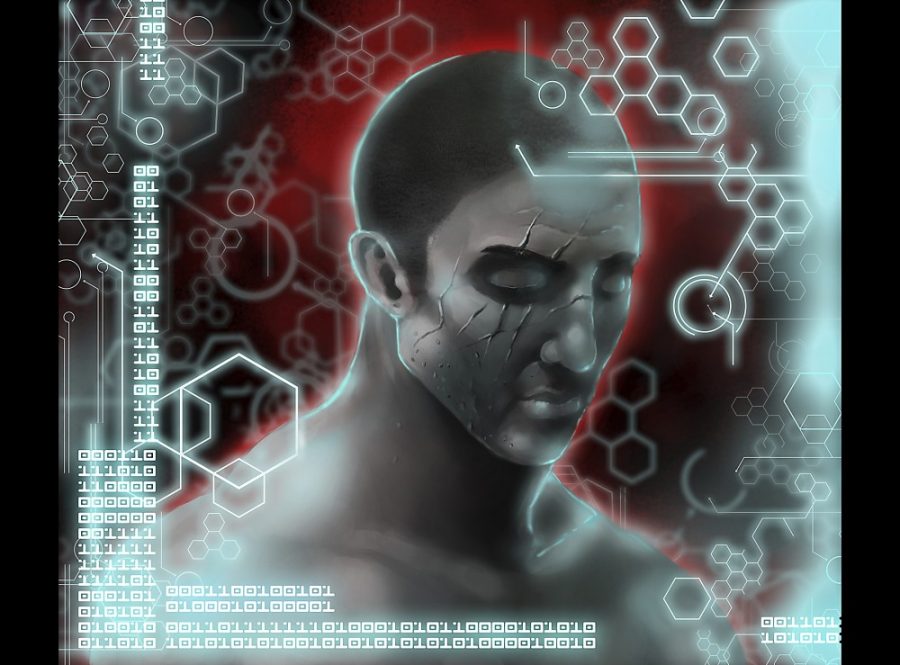Shane Csontos-Popko sits at his desk tablet sketching the detailed back of a male figure standing in front of a nuclear explosion. On his computer monitor to the left, a Stephen Hawking documentary about the universe and space lends inspiration. The scene and figure in front of Csontos-Popko isn’t one of oils, pastels, pencil or charcoal. Csontos-Popko works with a new medium, in which layers of oil paints crafting dimensions and shading have become layers easily compressed on Adobe Photoshop.
Fifty years ago, Andy Warhol challenged the traditional idea of art with his simple commercial illustrations. Today, Csontos-Popko follows in Warhol’s footsteps with a new kind of illustration: digital art.
For 40 years, different names such as computer or multimedia art have been used for the medium that utilizes computer programs to create art. Using techniques employed by advertisers and special effects specialists in movies, digital artists create all on screen — and with unique results.
“Digital art has its own uniqueness about it,” said Csontos-Popko, a studio art senior with a minor in Japanese studies. “It takes time and patience like everything else.”
He said he was first drawn to digital art because it looked more “polished and finished” than other art forms.
Although digital art may not require canvas or a sketchpad, digital artists still create original forms, Csontos-Popko said. Digital art requires the same skills and techniques as its more traditional fine art counterparts, such as form and lighting, but many art teachers do not yet accept or teach this new form. As a result, when Csontos-Popko first saw digital art, he said he wanted to work with it, but didn’t know where to begin.
Csontos-Popko said he decided to teach himself as much about digital art as possible with the help of online forums. He also experimented with the multitude of creative tools offered on his computer programs, and grew particularly comfortable with Photoshop.
From there, Csontos-Popko began to discover his own aesthetic as a digital artist. He said he incorporates human figures with protruding muscles, intricate skeletal outlines and barbaric poses into many of his pieces.
“I gravitate more to the human figure because it is more difficult to do. It’s such a bizarre looking form because you have the skeletal structure and all of these muscles moving around on top. … It’s not just a basic still-life of a rectangle or a sphere,” Csontos-Popko said.
He said he also works with ominous and apocalyptic images, as well as periodic war imagery, because those subjects are exciting to create. In the words of his philosophy professor Dave Christiano, “If it’s boring to make, then it’s going to be boring to look at,” Csontos-Popko said.
Csontos-Popko has submitted his artwork to traditional exhibits like the UA’s Lionel Rombach Gallery, but also hopes to create artwork that people will view and share with each other via the Internet, much in the way a YouTube video would go viral.
Csontos-Popko said he plans to eventually go into creating conceptual artwork for the entertainment industry. In the professional world, digital artists create 3D figures for movies and videogames using the character descriptions provided by writers or producers. In the meantime, Csontos-Popko said he will also continue to create his own original works of digital art and “bust my ass and sooner or later it will pay off.”
“All we really have is time, and I didn’t want to spend all of it doing Japanese studies,” he said. “Even if I’m not successful with this, I couldn’t stand not doing it.”
For more info
To see more of Shane Csontos-Popko’s art, check out his online portfolio: barados-x.cgsociety.org/gallery/1037146









